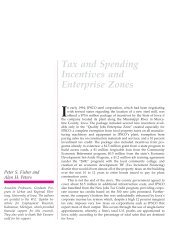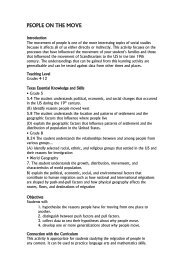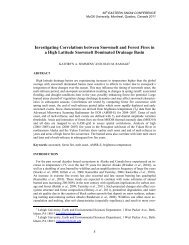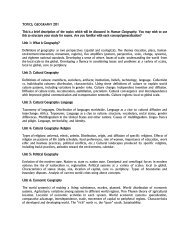Texas Social Studies Framework - Department of Geography ...
Texas Social Studies Framework - Department of Geography ...
Texas Social Studies Framework - Department of Geography ...
Create successful ePaper yourself
Turn your PDF publications into a flip-book with our unique Google optimized e-Paper software.
Appendix A<br />
How Should Districts Go about<br />
the Curriculum Development Task?<br />
Most <strong>Texas</strong> school districts have well established and<br />
reasonable policies and procedures in place to guide the<br />
process <strong>of</strong> curriculum development, revision, and<br />
implementation. This section <strong>of</strong>fers a few general<br />
suggestions regarding curriculum development. For a<br />
district that has effective policies and procedures, these<br />
suggestions might be considered as discussion points to<br />
use in examining local policy and procedures. If a<br />
district has no established policies and procedures<br />
governing curriculum development, revision, or implementation,<br />
these suggestions might serve as an initial<br />
guide to factors that need to be considered in the<br />
formation <strong>of</strong> curriculum policies and procedures. A<br />
useful guide to curriculum development can be found in<br />
Course design: A guide to curriculum development for<br />
teachers (Posner and Rudnitsky, 1994).<br />
ESTABLISH A FRAME OF REFERENCE FOR<br />
CURRICULUM WORK<br />
A set <strong>of</strong> ten axioms identified by Peter Oliva (1992)<br />
might serve as discussion points for a district’s leadership<br />
team as plans are made for the curriculum work that<br />
is necessary for implementing the TEKS for <strong>Social</strong><br />
<strong>Studies</strong>. They are <strong>of</strong>fered here as guidelines to assist<br />
educators in establishing a frame <strong>of</strong> reference regarding<br />
curriculum development.<br />
• Change is both inevitable and necessary, for it is<br />
through change that life forms grow and<br />
develop.<br />
• A school curriculum not only reflects but is a<br />
product <strong>of</strong> its time.<br />
• Curriculum changes made at an earlier period <strong>of</strong><br />
time can exist concurrently with newer curriculum<br />
changes at a later period <strong>of</strong> time.<br />
• Curriculum change results from changes in<br />
people.<br />
• Curriculum change is effected as a result <strong>of</strong><br />
cooperative endeavor on the part <strong>of</strong> groups.<br />
• Curriculum development is basically a decisionmaking<br />
process.<br />
• Curriculum development is a never-ending<br />
process.<br />
• Curriculum development is a comprehensive<br />
process.<br />
• Systematic curriculum development is more<br />
effective that trial and error.<br />
• The curriculum planner starts from where the<br />
curriculum is, just as the teacher starts from<br />
where the students are.<br />
As implied by the suggested axioms, viewing the<br />
curriculum only as a finished written product is short<br />
sighted. Curriculum work is continuous work demanding<br />
that careful attention and resources be devoted to<br />
preparing our students for life challenges they face both<br />
now and in the future. The State Board <strong>of</strong> Education’s<br />
rule mandating the implementation <strong>of</strong> the TEKS at the<br />
beginning <strong>of</strong> the 1998-99 school year is but one <strong>of</strong> the<br />
forces that calls educators’ attention to the need for<br />
continuous curriculum revision. Other factors that drive<br />
and influence curriculum change include:<br />
• changes in school and community demographics;<br />
• changes in family life;<br />
• changes in what we know about child and<br />
adolescent development, learning, and learning<br />
styles;<br />
• changes in the knowledge base drawn from<br />
history and the social sciences;<br />
• changes in the types <strong>of</strong> jobs and careers that our<br />
students will pursue as adults;<br />
• changes in technology;<br />
• changes in the pr<strong>of</strong>essional staff; and<br />
• changes in the demands on public schools from<br />
parents.<br />
Establishing a district-wide view <strong>of</strong> curriculum work as a<br />
process and a product in which all pr<strong>of</strong>essional educators<br />
are continuously involved is an important step in<br />
assuring that all students are well prepared for the future.
















